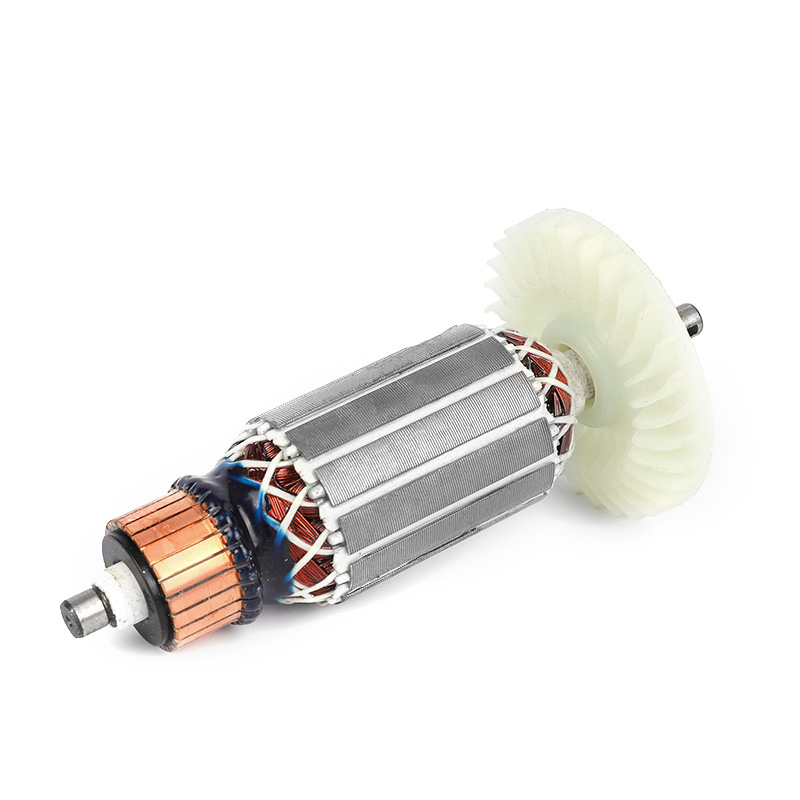- Home
- Products
- About Us
- Application
- News
- Contact Us
Web Menu
- Home
- Products
- About Us
- Application
- News
- Contact Us
Product Search
Exit Menu
Signs That Your Power Tool Armature Needs Replacement

Power tools are essential in various industries and workshops, valued for their ability to save time and effort during tasks that require precision and strength. One of the most important components inside these tools is the armature. The armature for power tools is responsible for converting electrical energy into the mechanical force that drives the tool's operation. When this component begins to fail, the tool may show clear signs that something is wrong.
One of the most common indicators of a worn-out armature is the sudden loss of power or a decrease in performance. If a power tool that once functioned smoothly starts operating inconsistently or feels noticeably weaker, it may be due to an issue with the armature. This can happen as a result of wear on the commutator or damage to the windings. Since the armature is central to the tool's operation, any problem with it can affect the entire system.
Another sign that the armature for power tools may need attention is unusual noises during use. A loud humming, crackling, or grinding noise is not typical and could indicate a mechanical imbalance or damage to the rotating components. These sounds often stem from brushes not making proper contact with the commutator or from warped armature components. If ignored, these noises can eventually lead to tool failure.
Overheating is also a key warning sign. If the power tool heats up more than usual during operation, it could be a result of the armature drawing excessive current due to short circuits or worn insulation. Prolonged overheating can damage other parts of the tool, making timely replacement of the faulty component necessary. Monitoring the temperature of the tool during extended use is a helpful practice to detect this issue early.
Visible sparking at the tool's brush area is another symptom of armature problems. While some sparking is normal in brushed motors, excessive or erratic sparking can be a cause for concern. It often points to worn-out commutators, damaged windings, or debris interfering with brush contact. In many cases, this issue can be traced back to the armature for power tools requiring maintenance or replacement.
Unpleasant odors, particularly a burning smell, can also indicate a failing armature. This can occur when the insulation on the armature windings begins to break down, causing short circuits or resistance buildup. If such smells appear during use, the tool should be turned off immediately to prevent further damage and ensure safety.
Inconsistent operation, where the tool works intermittently or only under certain conditions, can also be linked to an armature fault. Internal wiring or connection issues can cause the tool to start and stop unexpectedly, reducing reliability and posing a safety risk.
To address these problems, it's important to regularly inspect tools and identify early signs of wear. Replacing the armature for power tools before complete failure can extend the life of the equipment and reduce repair costs. When sourcing a replacement, it's crucial to select one that matches the tool's specifications and is manufactured to suitable quality standards.
Understanding the signs of armature failure can help tool owners make informed decisions about maintenance and replacement. Decreased power, strange noises, overheating, visible sparking, burning smells, and inconsistent operation are all potential indicators. By paying attention to these symptoms, users can ensure their tools remain reliable and safe to use.
-
Add: 1st Floor, No. 2, Huanan Road, Zhengcun, Economic Development Zone, Yongkang City, Zhejiang Province, China
-
Tel: +86-0579-87133113
-
E-mail: [email protected]

 English
English русский
русский Español
Español